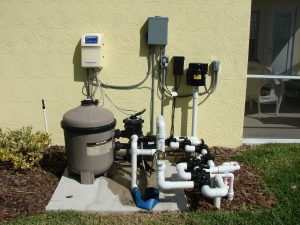 Protein purification refers to a series of processes aimed at isolating one or several proteins from a complex mixture, typically tissues, cells, or entire organisms. Protein purification is critical to the characterisation of structure, function, and interactions of the target protein.
Protein purification refers to a series of processes aimed at isolating one or several proteins from a complex mixture, typically tissues, cells, or entire organisms. Protein purification is critical to the characterisation of structure, function, and interactions of the target protein.
The process of purification may separate the mixture’s protein and non-protein parts, before finally separating the target protein from the rest of the proteins. Separating the target protein from the rest is usually the most laborious task in protein purification.
The steps involved in protein purification at Fleet bioprocessing generally exploit the differences in biological activity, binding affinity, physio-chemical properties, and protein size. The pure result can be referred to as protein isolate.
The Purpose of Protein Purification
Protein purification can be either analytical or preparative.
Preparative purification is aimed at producing purified proteins in relatively large quantities for subsequent uses. Examples here include the preparation of commercial products such as certain biopharmaceuticals (e.g. insulin), nutritional proteins (e.g. soy protein isolate), and enzymes (e.g. lactase). A number of preparative purification steps are usually deployed to eliminate bi-products, such as host cell proteins, and this can pose as a possible threat to the health of the patient.
Analytical purification, on the other hand, produces a relatively small quantity of protein for various analytical or research purposes, including quantification, identification, as well as studies of the structure of the protein, along with post-translational modifications and function. Urease and pepsin were the first proteins purified to the extent that they could be crystallised.
Purification Strategies
The choice of starting material is integral to the purification process’ design. In an animal or plant, a specific protein is usually not distributed homogeneously through the body; different tissues or organs have a lower or higher concentration of the protein.
Using just the organs or tissues with the highest concentration reduces the volumes required for the production of a certain amount of purified protein. If the protein either has a high value or is present in low abundance, recombinant DNA technology is used for developing cells that produce large quantities of the target protein (it is known as an expression system).
The recombinant expression allows for tagging of the protein e.g. by a Strep-tag or a His-tag to allow for purification thus reducing the number of steps involved in the purification.
Analytical purification separates proteins by utilising three properties. First, proteins can be purified on the basis of isoelectric points by running them through an ion exchange column or a pH graded gel.
Second, proteins are separated according to their molecular weight or size using size exclusion chromatography or by Sodium Dodecyl Sulphate-Polyacrylamide Gel Electrophoresis (SDS-PAGE) analysis.
Protein are usually purified using 2D-PAGE before they are analysed by peptide mass fingerprinting, which is aimed at establishing the identity of the protein. It is very useful for scientific purposes and the protein detection limits are currently very low and even nanogram quantities of protein are enough for their analysis.
Thirdly, proteins can be separated by hydrophobicity/polarity via reversed-phase chromatography or high-performance liquid chromatography.
A proteome purification protocol usually contains one or more chromatographic steps. The basic procedure in chromatography is flowing the solution that contains the protein through a column filled with a variety of metals.
Different proteins will interact differently with the column material and can therefore be separated by the time taken to pass through the column, or the conditions needed to elute the protein from the column. Proteins are usually detected when coming odd the column by their absorbance at 280nm.
